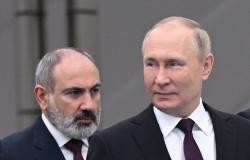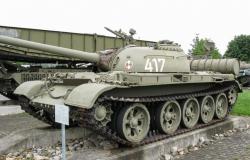
In a surprise move last week, Chinese leader Xi Jinping disbanded the Strategic Support Force (SSF), a military branch he created in 2015 to integrate the military’s space, cyber, electronic and psychological warfare capabilities Popular Liberation (APL), as part of a comprehensive review of the armed forces, CNN reports.
In place of the SSF, Xi inaugurated the Information Support Force, which he said is “a new strategic arm of the PLA and an essential foundation of the coordinated development and application of the network’s information system.”
The new force will play an important role in helping China’s military “fight and win in modern warfare,” Xi said at a ceremony.
At a press conference the same day, a spokesman for China’s Ministry of Defense stated that the SSF had been split into three units:
- Information Support Force
- Aerospace Force
- Cyberspace Force
They will answer directly to the Central Military Commission, the body at the top of the military chain of command led by Xi.
Under the new structure, the PLA now consists of four services — the army, navy, air force and missile force — plus four divisions: the three SSF spin-off units and the Joint Logistics Support Force, according to ministry spokesman Wu Qian .
The effects of reorganization
Chinese military experts say the reorganization increases Xi’s direct control over the PLA’s strategic capabilities and underscores China’s ambitions to better master artificial intelligence and other new technologies to prepare for what they call the “smart war” of the future. writes CNN.
The restructuring comes after an extensive purge carried out last year among the APL due to corruption. Xi has removed powerful generals and shaken up the missile force, an elite branch that oversees China’s expanding arsenal of nuclear and ballistic missiles.
The Information Support Force will be led by top generals from the former SSF.
Long-time observers of the PLA say the latest reorganization is unlikely to be the result of recent corruption purges, but rather a reflection that the SSF was not an ideal organizational format for the Chinese military.
Joel Wuthnow, a senior research fellow at the Pentagon-funded National Defense University, says the former division “reduced Xi’s visibility of important functions and didn’t really improve coordination between space, cyber and network defense forces.”
“I think the new structure will give Xi better visibility into what’s going on in space, cyberspace and network management. These functions will now be overseen at his level and not through the Strategic Support Force, which served as an intermediary,” Wuthnow said.
The spy balloon that the Chinese leader did not know about
The lack of such visibility could have high risks, especially during times of heightened tension and deep mistrust between Beijing and Washington.
Last year, the US shot down a Chinese surveillance balloon after it crossed US territory. The incident sparked a new crisis between the two powers and plunged bilateral relations into a deep freeze for months.
Although US intelligence officials said the balloon was part of a broad surveillance program led by the Chinese military, Xi may not have been aware of the mission.
US President Joe Biden said last June that the Chinese leader did not know about the balloon and was “very embarrassed” when it was shot down.
James Char, a researcher at Singapore’s S. Rajaratnam School of International Studies, said the deployment of strategic reconnaissance during the spy balloon incident would have been the responsibility of the SSF’s Aerospace Systems Department. “That was one of the roles and responsibilities of PLASSF,” he said. It is unclear whether the balloon incident contributed to Xi’s decision to disband the SSF.
Wuthnow, of the National Defense University, said the newly created Information Support Force would likely take over communications and network defense for the PLA.
“Getting these things right is of huge importance to the PLA in any future conflict, and the Chinese have paid particular attention to these functions and probably learned lessons for their own organization from the war in Ukraine,” he said, referring to the invasion Russia in Ukraine. “It is logical that the president (of the Central Military Commission) wants to play a more direct role in this area,” he continued.
How China sees ‘smart war’
The latest reshuffle is likely the result of an ongoing review of how the military can better meet the Chinese Communist Party’s strategic goals, Char says.
“I suppose the reorganization better reflects the importance the APL has placed on accelerating the development of intelligent warfare” brought on by a new round of technological and industrial advances, he said.
The concept of “smart war” gained attention in a 2019 Chinese defense white paper that highlighted the military application of cutting-edge technologies such as artificial intelligence, quantum information, big data and cloud computing.
“The landscape of international military competition is undergoing historic changes. New and high-tech military technologies, with information technology as their core, are advancing day by day, and there is a prevailing trend to develop long-range, intelligent, invisible, or unmanned precision weaponry and equipment,” the book states. white.
“War is accelerating its evolution towards an informational war, and intelligent war is on the horizon,” the white paper also states.
The creation of the Information Support Force as a new branch directly under the Central Military Commission also underscores the importance of information dominance in modern warfare.
The Chinese military’s official spokesman, in a commentary in the PLA Daily, described network information technology as the “biggest variable” in improving combat capability.
“Modern wars are contests between systems and structures, where control of information equates to control of the initiative in war,” the article reads.
The emphasis on informational dominance and “smart warfare” also has significant implications for any potential future conflict in the Taiwan Strait.
The Chinese Communist Party considers Taiwan part of its territory, although it has never controlled it, and has vowed to take control of the island — by force, if necessary.
Char said that in the event of a conflict in Taiwan, the Information Support Force “would likely take the spearhead role in supporting the PLA’s attempts to dominate the information space before Beijing’s adversaries can do so.”
Photo: Hepta
Follow us on Google News
Tags: Jinping Biggest Restructuring Chinese Military Decade Strategy
-




